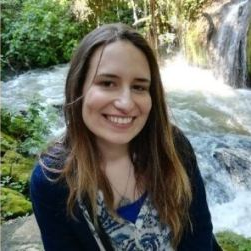Adsorbents for Water and Wastewater Treatment and Resource Recovery - Volume II
A special issue of Water (ISSN 2073-4441). This special issue belongs to the section "Wastewater Treatment and Reuse".
Deadline for manuscript submissions: closed (15 December 2023) | Viewed by 25153
Special Issue Editors
Interests: adsorption; wastewater treatment; natural adsorbents; toxic metalloids; metal recovery
Special Issues, Collections and Topics in MDPI journals
Interests: composites; carbon nanomaterials; environmental remediation; electrochemistry; sensors; biomedicine
Special Issues, Collections and Topics in MDPI journals
Interests: water and wastewater treatment; adsorption; low-cost materials; removal of heavy metals; nutrient recovery
Special Issues, Collections and Topics in MDPI journals
Special Issue Information
Dear Colleagues,
Adsorption is a well-established operation commonly used for water decontamination. Owing to its simplicity, ease of operation, effectiveness and selectivity, it is usually applied for the removal of odor, taste, toxic metals, radionuclides, nutrients, pharmaceuticals, pesticides, and other emerging contaminants from water. Adsorption has been ever more considered on the separation and recovery of substances of economical importance, or at risk of scarcity, such as phosphate and technology metals.
The global demand of safe water makes it imperative to treat effluents efficiently and to reuse water. The development and usage of alternative adsorbents for these purposes have captured scientific interest, motivated by the transition to a sustainable circular economy and the need of greener adsorbents.
With the success of the first volume of the Special Issue "Adsorbents for Water and Wastewater Treatment and Resource Recovery", the second volume of this special issue invites the submission of original research and review papers, covering current research and applications on adsorbents for water treatment and resource recovery. Contributions may focus on (but are not limited to) the use, synthesis/preparation and characterization of adsorbents such as biochar, biosorbents, clays, metal-organic frameworks, nanomaterials, composite and functional materials. Studies covering different organic or inorganic adsorbates, in view of decontamination of drinking-water and the treatment of irrigation water, industrial effluents, mining and landfill leachates are welcome. After a first special issue, “Adsorbents for water treatment and resource recovery II” will be especially receptive to contributions reporting case studies, continuous adsorption processes, regeneration and recovery assessments, process design, modeling and simulation, economic analysis and life-cycle assessments applied at the different developing stages of adsorbent synthesis and usage.
Dr. Sílvia Santos
Dr. Antonio Turco
Dr. Ariana Pintor
Guest Editors
Manuscript Submission Information
Manuscripts should be submitted online at www.mdpi.com by registering and logging in to this website. Once you are registered, click here to go to the submission form. Manuscripts can be submitted until the deadline. All submissions that pass pre-check are peer-reviewed. Accepted papers will be published continuously in the journal (as soon as accepted) and will be listed together on the special issue website. Research articles, review articles as well as short communications are invited. For planned papers, a title and short abstract (about 100 words) can be sent to the Editorial Office for announcement on this website.
Submitted manuscripts should not have been published previously, nor be under consideration for publication elsewhere (except conference proceedings papers). All manuscripts are thoroughly refereed through a single-blind peer-review process. A guide for authors and other relevant information for submission of manuscripts is available on the Instructions for Authors page. Water is an international peer-reviewed open access semimonthly journal published by MDPI.
Please visit the Instructions for Authors page before submitting a manuscript. The Article Processing Charge (APC) for publication in this open access journal is 2600 CHF (Swiss Francs). Submitted papers should be well formatted and use good English. Authors may use MDPI's English editing service prior to publication or during author revisions.
Keywords
- adsorption
- pollutants
- metals
- nutrients
- emerging contaminants







